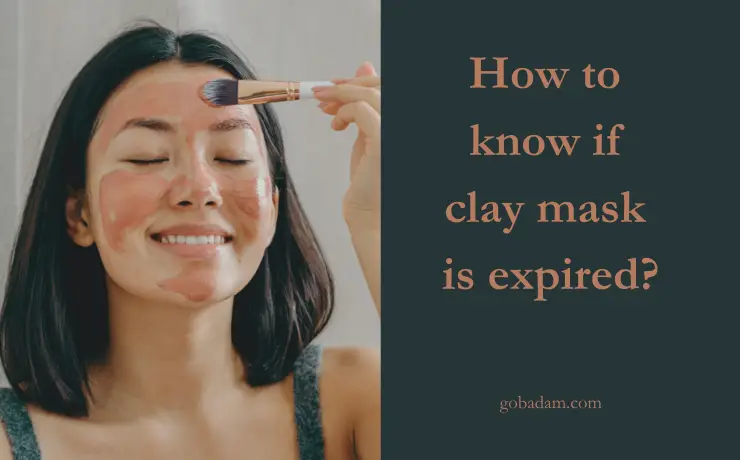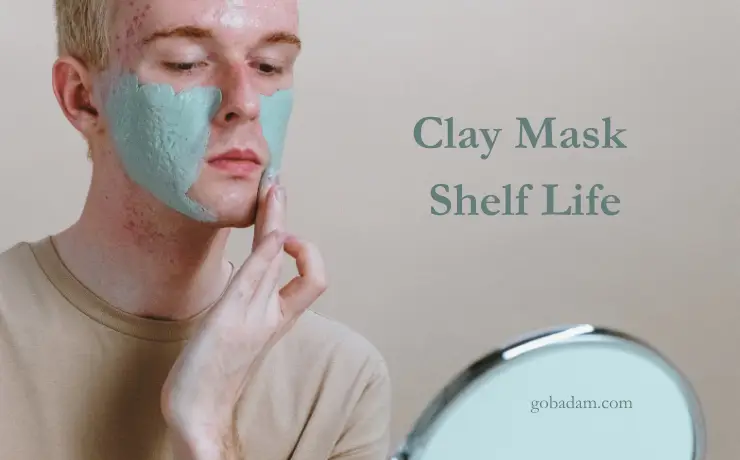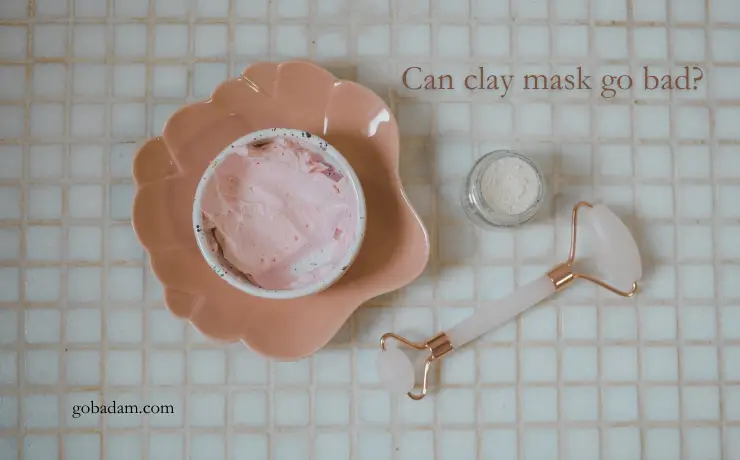How to know if a clay mask is expired? Ah, the age-old beauty conundrum. As any savvy skincare aficionado would tell you, a clay mask is like that finicky bottle of wine: sublime when fresh but a tad concerning when past its prime.
SEE OFFER 👉🏻clay masks for face
The tale-tell signs? Think changes in its silky texture, an unexpected odor reminiscent of last summer’s leftovers, or a sudden Picasso-esque discoloration. But wait, there’s more.
Dive deep into the world of clay masks with us as we unravel their shelf life mysteries, dissect the nuances between expiration and the ‘best before’ riddles, and delve into the dramatic sagas of ingredient separation. Get ready to become the Sherlock of skincare!
How to know if clay mask is expired?
You can check for changes in texture, unusual odors, discoloration, or unexpected skin irritations after application. These are immediate signs that your mask might be past its prime.

Clay mask spoilage signs
Fresh clay masks typically maintain a consistent texture. If yours starts to turn flaky, overly dry, or oddly lumpy, it’s a warning flag. Similarly, any off-putting or rancid smell is a clear indicator of spoilage. Masks also might display signs of expiration through discoloration, especially if they develop dark or uneven patches.
While certain masks can naturally induce sensations like tingling or tightening, any unexpected irritation or redness can signify a mask that’s no longer safe for use. Always pay attention to the manufacturer’s guidelines, especially expiration dates, and store the mask appropriately to prolong its efficacy.
Clay mask vs sheet mask
Clay masks, renowned for their deep-cleansing prowess, can show their age through shifts in texture, becoming flaky or lumpy. An off-putting or rancid scent, or a change in color, especially with the appearance of dark patches, is a clear indicator of expiration. Ingredient separation, with oils or other components settling distinctly, further underscores its decline.
Contrastingly, sheet masks reveal their spoilage differently. The serum’s color and scent are prime indicators, with any sour or unusual aroma signaling a problem. A change in the serum’s consistency or the presence of mold is a cause for concern. You can learn more about sheet mask expiration from here.
As always, manufacturer guidelines, particularly expiration dates, remain a trusted beacon in determining the freshness of both mask types.
Clay mask vs foot peel mask
Clay masks, cherished for their deep-cleansing attributes, often show wear and tear through texture alterations, becoming either overly dry or acquiring an unexpected lumpiness. The emergence of an unusual scent or a shift from its original hue, especially with dark or uneven spots, is a telltale sign of its decline. Moreover, when the ingredients of the clay mask begin to separate, it’s clear the product is past its prime.
On the other hand, foot peel masks, designed to exfoliate and renew the feet, have their own set of expiration indicators. A deviation in the liquid’s scent or consistency can signal spoilage. If the peeling solution dries out or becomes too sticky, it may no longer be effective. Furthermore, any discoloration or signs of mold in the packaging is a definite red flag. You can learn more about foot peel mask spoilage signs from here.
As with clay masks, it’s vital to rely on manufacturer guidelines, particularly expiration dates, to ensure the efficacy and safety of foot peel masks.
Clay Mask Shelf Life
Clay masks, akin to other skincare treasures, come with a specific window of freshness, determined by an interplay of ingredients, preservatives, and storage nuances. Commercial clay masks, infused with preservatives, are crafted to ward off microbial invaders, ensuring the product’s longevity. Depending on their unique formulation, such masks can graciously serve your skincare routine for anywhere between 12 to 24 months after their grand unsealing.
However, if you’re venturing into the realm of natural or DIY clay masks, tread with a bit more caution. Devoid of preservatives, these natural concoctions have a penchant for expiring swiftly, often within a mere span of weeks to a few months. Hence, for these homemade delights, the mantra is simple: whip, apply, and discard any remnants promptly.

How does clay mask packaging affect its lifespan?
Packaging, too, plays its part in this longevity drama. Opt for masks ensconced in air-tight tubes or pumps, champions in minimizing contamination and oxidation. Such packaging choices promise a longer liaison with your mask compared to their jar-contained counterparts.
And let’s not forget the cardinal rule: bestow your clay mask with a cool, shadowy sanctuary away from the sun’s prying rays. Excessive heat and light are notorious for their ingredient-degrading tendencies.
Lastly, always let the mask’s packaging guide you. Seek out the expiration date or the “best by” cue. And if you spot a symbol resembling an open jar paired with a number, you’ve found your mask’s post-opening lifespan in months. When the mask’s texture, color, or aroma begins to waltz to a different tune, it might be time to bid adieu and welcome a fresh jar into your beauty regimen.

How to store clay masks properly?
Storing clay masks properly ensures they remain effective and safe for use. Here’s how you can maintain the integrity of your clay masks:
Cool, Dry Place: Store your clay mask in a cool and dry environment. Avoid places where it can be exposed to high temperatures or humidity, as these conditions can alter the mask’s consistency and efficacy.
Away from Direct Sunlight: Ultraviolet rays can degrade the active ingredients in the mask. Always keep the mask away from direct sunlight or sources of UV light.
Tight Seals: Ensure the container’s lid or cap is tightly sealed after every use. This prevents contamination and reduces the mask’s exposure to air, which can dry it out.
Use Clean Tools: If you’re scooping out the mask using a tool or your fingers, ensure they’re clean. It’s even better to use a dedicated spatula or spoon. Clean it after each use and keep it in hygienic conditions until the next use. In this way, you minimize bacterial production.
Avoid Water Contamination: Water can introduce bacteria and mold into the product, shortening its shelf life. Always ensure your hands and any tools are dry when you’re accessing the mask.
Follow Manufacturer’s Guidelines: If the product comes with specific storage instructions, follow them closely. Some masks may have unique requirements due to their ingredients.
Refrigeration: While most clay masks do not require refrigeration, some natural or organic varieties might benefit from being stored in the fridge, especially in warmer climates. However, always refer to the product’s label or consult with the manufacturer before doing so.
Regularly Check: Periodically inspect your mask for changes in smell, color, or texture, which can indicate spoilage. Always track the expiration date.
By following these guidelines, you can extend the shelf life of your clay mask and ensure it remains safe and effective for your skin.
If you need to refresh your stocks, take a look at this clay facial mask.

Frequently Asked Questions About How to Know if Clay Mask is Expired
Here are top questions about how to know if a clay mask is expired. If you have any questions, feel free to share them.
Can I use a clay mask after its expiration date?
It’s best to avoid using expired clay masks. Over time, they lose efficacy and could contain bacteria or mold, potentially causing skin irritations.
Is it normal for a clay mask to cause tingling or redness?
Some clay masks may cause a mild tingling sensation upon application, which can be normal. However, intense tingling or prolonged redness is a sign to rinse off immediately and reconsider its suitability for your skin type.
Can I mix different types of clay for my mask?
Absolutely! Mixing different clays can allow you to benefit from multiple properties. For instance, combining kaolin with bentonite can offer gentle exfoliation while also drawing out impurities. You can do your own masks with this face mask making machine!
Can clay mask get moldy?
Yes, clay masks can become moldy. While the dry, mineral-rich nature of clay is generally unfriendly to microbes, factors like moisture contamination, organic additives, and ineffective preservatives can encourage mold growth. Especially vulnerable are masks stored in humid conditions or those with added natural ingredients. Over time, even preservatives in commercial masks can lose their potency, increasing the risk. If you detect any signs of mold, such as an unusual odor or discoloration, it’s safest to discard the mask.


Some truly interesting information, well written and generally user pleasant.
Hey people!!!!!
Good mood and good luck to everyone!!!!!
hello there and thank you for your information – I’ve definitely
picked up anything new from right here. I did however expertise several technical issues
using this web site, since I experienced to reload the website many times
previous to I could get it to load properly. I had
been wondering if your hosting is OK? Not that I am complaining, but sluggish loading instances times will very frequently affect your placement in google and could damage your quality score if advertising and marketing with Adwords.
Well I am adding this RSS to my email and can look out for much more of your respective intriguing
content. Ensure that you update this again soon.. Escape room
Very interesting info!Perfect just what I was searching for!!
Эффективные стратегии арбитража трафика для повышения прибыли, которые помогут вам заработать больше.
Почему арбитраж трафика – это отличная возможность для заработка, с минимальными вложениями.
Как выбрать подходящие источники трафика для арбитража, для эффективного монетизации вашего трафика.
Как создать высокоэффективные рекламные кампании для арбитража трафика, для успешного монетизации трафика.
Как получить стабильный доход от арбитража трафика без финансовых потерь, благодаря эффективным стратегиям и инструментам.
как зарабатывать на арбитраже трафика [url=http://www.traffic-arbitrage.com/]http://www.traffic-arbitrage.com/[/url] .
seo аудит цена [url=www.kvartiry-na-kipre.ru]seo аудит цена[/url] .
A reliable SEO company for improving search engine rankings, professional help in the field of SEO.
How to make the right choice of an SEO agency, recommendations from specialists.
Why you should turn to SEO professionals, what to expect from cooperation.
An article about the best SEO companies, customers’ experience.
Effectiveness of an SEO company for your website, main advantages.
seo experts near me https://www.seorg-seo.com .